On-Site Fluid Intelligence: A Revolution to Advance Machinery Reliability
Yuegang Zhao, John Morgan, Daniel Walsh
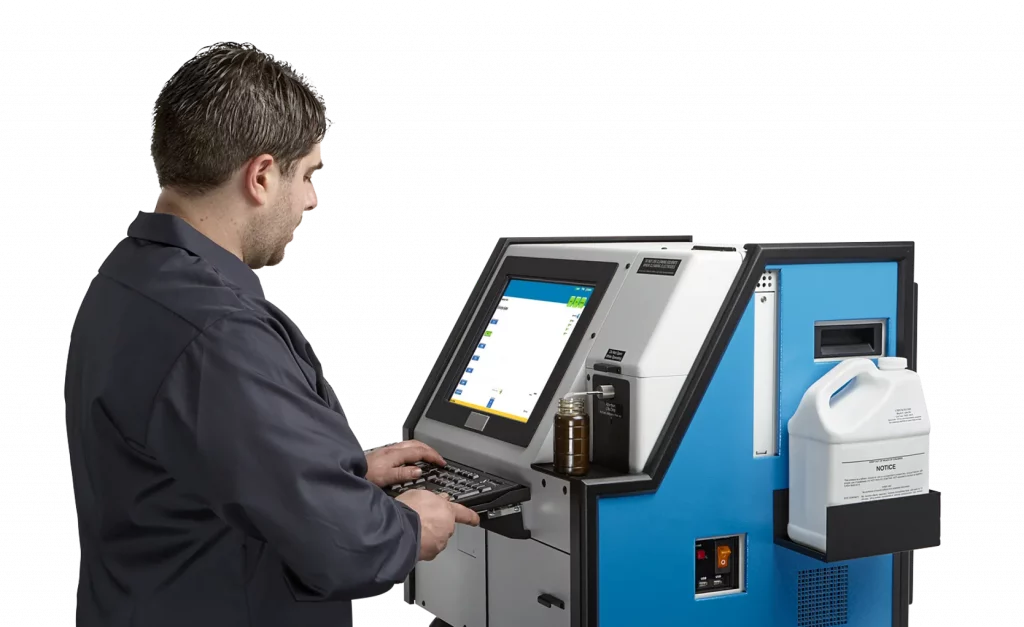
On-site Fluid Intelligence
Using in-service oil analysis to improve machinery reliability has a long history. The first oil analysis was performed over half a century ago on a locomotive engine. Just as a human blood test provides important information about your health, the information provided by in-service oil analysis about machinery health, especially for a piece of complex machinery with many moving parts, such as a diesel engine, is unmatched by any other technologies on the market.
On-site fluid analysis had been adopted for a while by a few mission critical industries, such as military aerospace and F1 racing, as a tool to protect their most critical assets – engines. In the case of Formula One racing, Pat Henning, chief technology officer of a Massachusetts-based global supplier of oil, fuel, and processed-water analysis instrumentation and software, once worked with a trackside support team in an F1 racing event in Bahrain. According to Henning, “The team was literally testing engine oil samples live. They ran to the car, quickly took a few milliliters of oil, rushed back to the analyzer and waited for the results to be ready in 30 seconds. They were looking for just one ppm change in some wear metals, such as iron or silver, because after a few laps, a one ppm change in wear metals could mean a major issue with the engine and cost a win.”
In military aerospace, oil analyzers have to be ready and provide the first go-no-go reports within a few hours of a fly order being issued. Sometimes, pilots wait next to the analyzer for the report to give a green light.
These are two great examples of how oil analysis can be critical to the success of a mission. Oil analyzers are not just used on-site, but the oil analysis results are fully integrated in the workflow and used for decision-making. Is it safe for this aircraft to fly this mission? Is the car engine healthy enough to compete in tomorrow’s race or should we swap it out?
Just as point-of-care medical results allow a doctor to make timely decisions, rapid analysis of machine health allows maintenance professionals to make informed, confident decisions on the maintenance actions of their valuable assets. With on-site fluid intelligence, which includes fluid analysis, diagnostics and recommended actions, engine or gearbox wear and oil condition information are immediate and easy to decipher. Just-in-time reports, combined with service recommendations from an expert system, are revolutionizing how people develop, test, produce and maintain their oil lubricated machines.
Yet today, most people collect oil samples on-site and send them to an off-site lab. Each year, tens to hundreds of million oil samples are sent to thousands of oil analysis labs around the world to be analyzed. Most of the time, oil reports arrive days or weeks later, too late for just-in-time decision-making, so they are not fully utilized.
Figures 1-2: Fleet maintainers using on-site oil analyzer
Point-of-care oil analysis is not yet a widely adopted practice. There are several reasons why:
- One major reason is the misperception that on-site fluid intelligence requires implementation of an oil analysis lab on-site with all the expertise and costs associated with it. In actuality, building a complete commercial oil analysis laboratory on-site is neither necessary nor advisable.
- In-service oil analysis can be confusing and intimidating to beginners. The importance of oil analysis is generally well accepted. The difficult part is deciding what to test, how to test it and how to interpret the results in order to decide on the best course of action. An engine oil analysis report, for example, can consist of over 30 parameters, including engine wear metals, corrosion, contamination (such as the presence of water), coolant, or fuel, and oil condition. Compared to other predictive maintenance technologies, such as vibration analysis and thermal imaging, there is a lot more information provided by oil analysis. This can be good and bad. It’s good to get such a complete picture of machinery health, but the complexity of oil analysis can scare away many potential users. A commercial oil analysis laboratory has many different instruments to measure all these parameters, such as optical emission spectrometers, gas chromatography, particle counters, PQ index, Karl Fischer analysis, titrators, viscometers, FTIR, ferrography, and more. For a person not in the oil analysis business, it can be a scary thought to even think of doing oil analysis on-site.
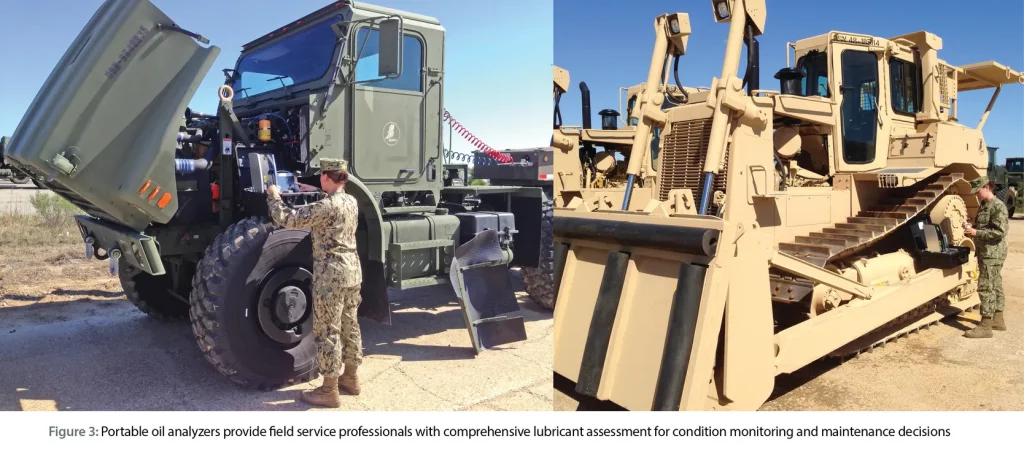
- Aside from the capital expense involved in purchasing the necessary analytical instruments, there are three main categories of additional capital and operating expenses associated with setting up an on-site oil analysis laboratory:
- Facility and IT expenses – facility, utility, networking, computers, security, software;
- Staffing – chemist, administration, technicians;
- Safety – environment, health and safety (EHS), chemical storage, disposal, safety training, recycling, fume hoods, acid sinks.
- Even if all these challenges are resolved and an on-site oil lab is established, an oil sample in the lab travels from instrument to instrument with a batch of many other samples for maximum throughput. While the throughput for a lab can be as high as hundreds to thousands of samples per day, it could still take hours to finish one sample because the workflow might not be optimized for a single sample. Reliability engineers in power plants sometime wait impatiently outside the lab for the report, while the lab staff works hard to run the sample through all the instruments to get a final report. This is still not point-of-care oil analysis as the report is not “just in time” for decision-making. To fully unleash the power of oil analysis, the report needs to be produced whenever it is needed so that a decision can be made right away.
The situation has changed and on-site fluid intelligence is leading the revolution. Just as medical testing has moved from the laboratory to the point of care with the advent of tests, like blood glucose or home pregnancy tests, oil analysis is similarly moving from the labs to where the assets are maintained.
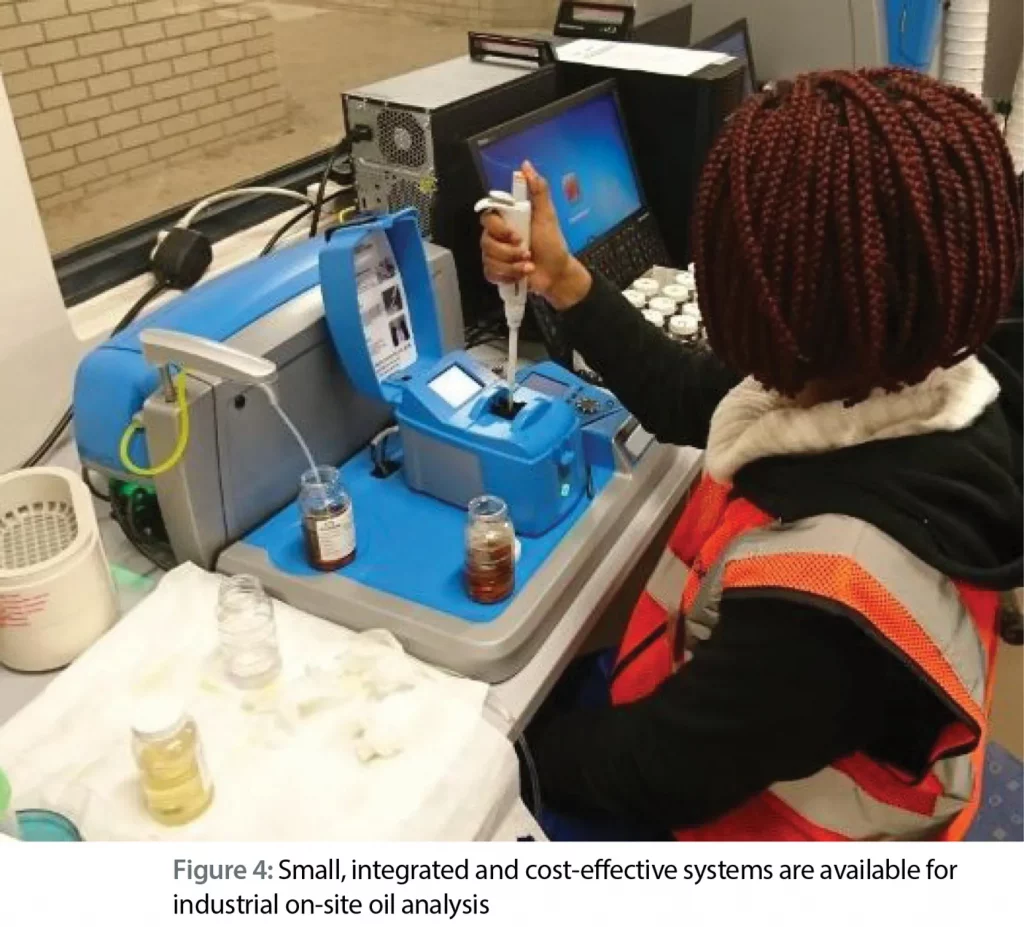
Technology has advanced so much over the past 10 years that small, integrated and cost-effective oil analysis tools are now available, providing the same or similar information that an oil analysis lab provides. Tabletop oil analysis systems are only a fraction of the cost of setting up an oil lab on-site, without the need of large lab space, the handling of hazardous materials, IT infrastructure, special skills and additional staffing. Built-in rules and diagnostics can be applied to the raw data automatically, based on the equipment information and oil information, so diagnostics and recommendations are available right after the test. The whole process only takes a few minutes for a sample to complete and the instruments can be installed right inside a factory or a repair depot.
Pioneers in every industry are taking notice and are starting to integrate on-site fluid intelligence in their workflow. They are now enjoying the benefits of huge cost savings and performance and productivity gains. Here are some examples:
- A trackside oil lab was introduced by a high-performance motor oils company to support its sponsored Dakar racing teams and all the competing teams, giving them confidence that they can cross the finish line without mechanical problems in their engines.
- A major oil drilling company in North America has been using on-site oil analysis for many years for its global drilling fleets, enjoying over $1 million per month in oil savings.
- A large municipal transportation fleet in the U.S. with over 3,000 pieces of heavy equipment, including 800 police cars and 500 heavy-duty trucks, used on-site oil analysis in 2016 and reported savings of over $2 million by extending oil drain intervals, in addition to the cost savings in reduced repairs.
- A midsize, seven-bay garage owner in the Midwest U.S. used an on-site oil analyzer to check engines and transmissions of customers’ vehicles before making major repair decisions. The point-of-care oil analysis became the owner’s competitive advantage and generated good revenue, as well.
The list goes on and on. It includes companies in power generation, oil and gas, mining, chemical processing, food and beverage, pharmaceutical, transportation, aerospace, lubricant suppliers and heavy equipment original equipment manufacturers. They are taking advantage of the just-in-time information provided by oil analysis and incorporating it into their workflows for better decision-making. On-site fluid intelligence is starting to revolutionize how people design, test, produce and maintain their most precious machinery assets for better productivity and lower cost. The time has finally come!

Yuegang Zhao
Yuegang Zhao is the Senior Vice President of Sales and Marketing at Spectro Scientific, Inc. Mr. Zhao has over 15 years of experience in the electronics and analytical instrumentation industries. He has held positions in a variety of markets, including semiconductor, aerospace, energy, and heavy equipment maintenance for industrial manufacturers.

John Morgan
John Morgan is the Direct Marketing Manager at Spectro Scientific, Inc., where he is primarily responsible for digital marketing initiatives, including management of Spectro’s marketing automation tool and online content creation. John holds two U.S. patents and has authored numerous technical papers in the areas of analytical instruments, microscopy and semiconductors.

Daniel Walsh
Daniel Walsh is the Director of Technical Sales Support and Product Line Management at Spectro Scientific, Inc. Daniel has over 20 years of experience with oil and wear debris analysis, industrial lubrication and problem- solving. He is a member of ASTM and actively supports development of standards for condition monitoring.
Related Articles
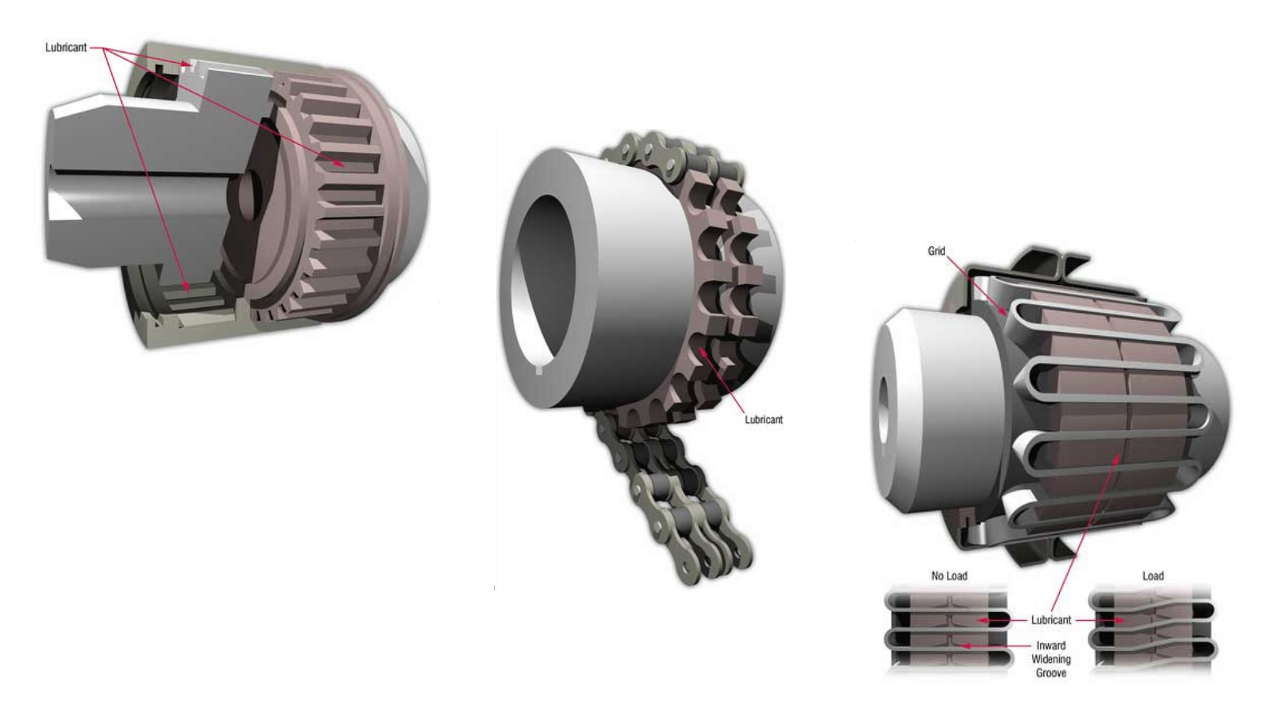
The Lubrication Requirements of Couplings
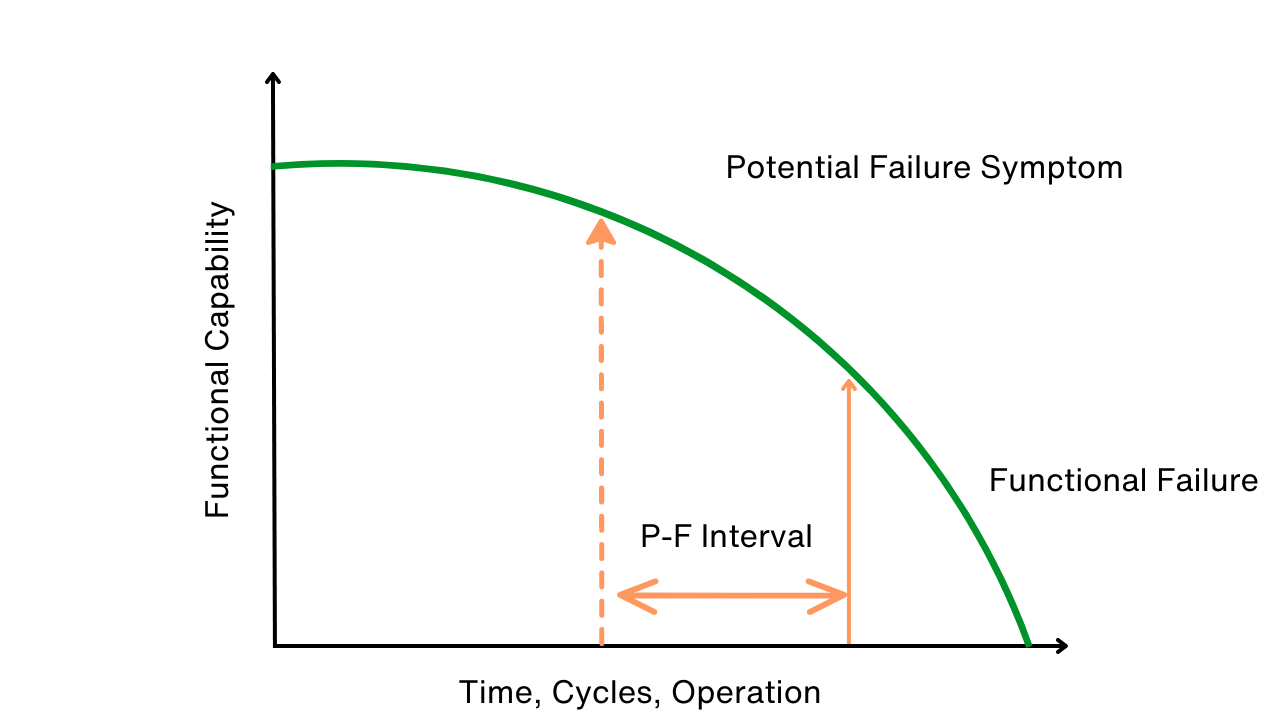
Use P-F Intervals to Map, Avert Failures

The RCM Trap

The Building Blocks to Creating an Effective Lubrication Program


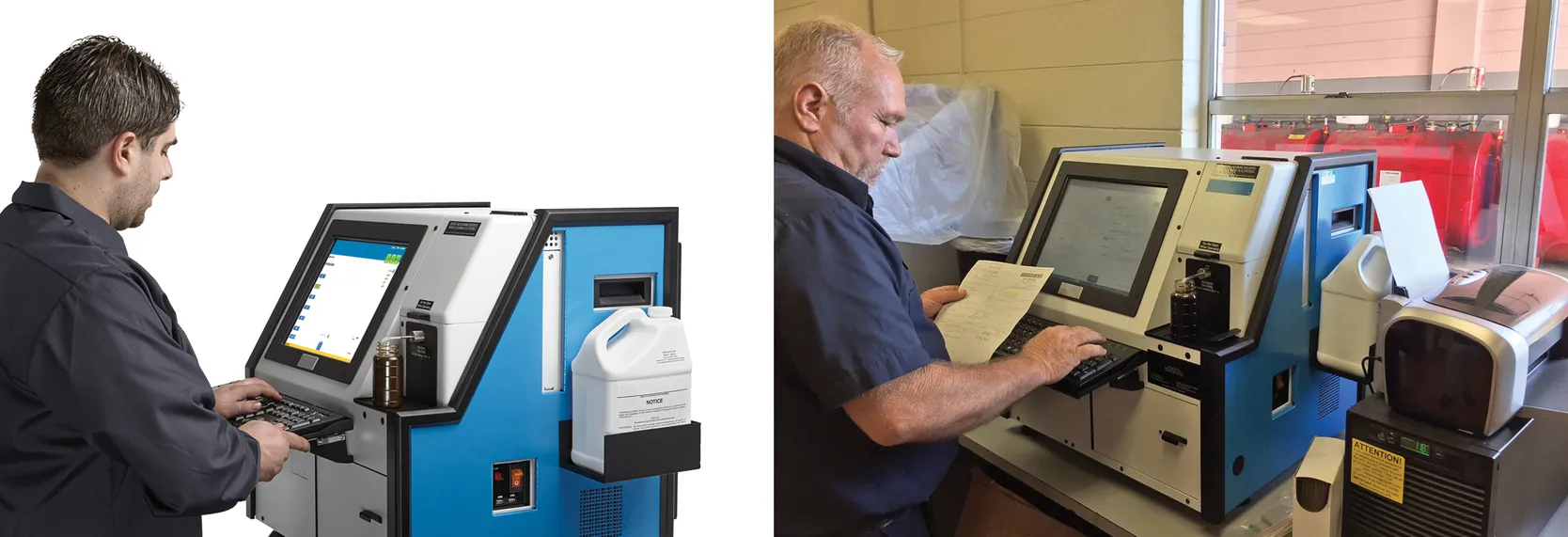 Figures 1-2: Fleet maintainers using on-site oil analyzer
Figures 1-2: Fleet maintainers using on-site oil analyzer


